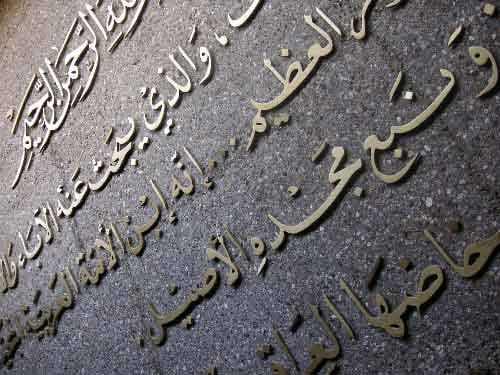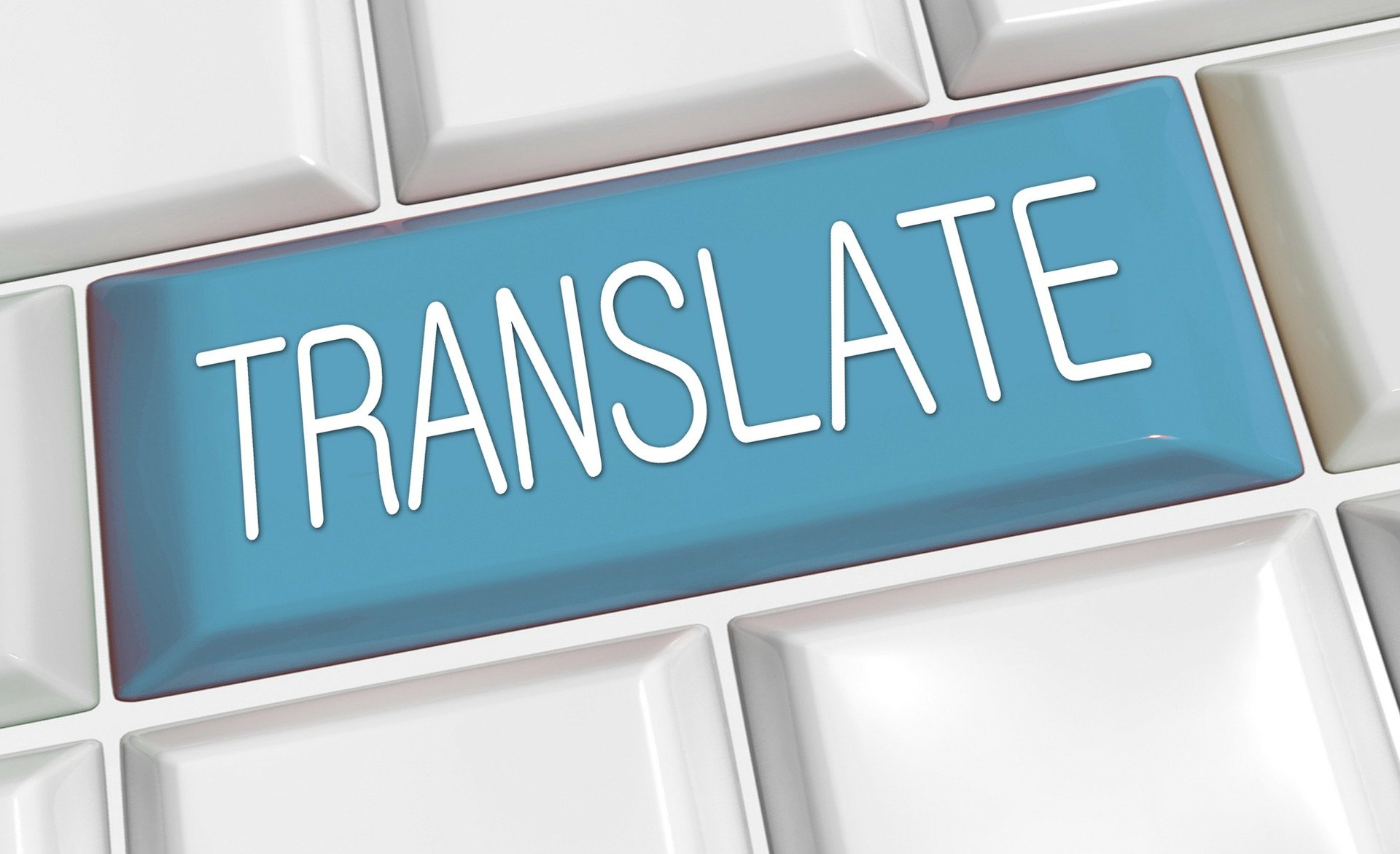Listen to Audio Version:

Right-to-left OR left-to-right? Targeting Arabic speakers gives you a huge opportunity for business growth. Less than 5% of websites have Arabic translation, yet there are over 420 million people in the world that speak Arabic.
Adoption of cell phone and internet usage amongst Arabic consumers is high – giving them easy access to mobile and online search and purchasing.
Additionally, the types of requests we are currently receiving for Arabic website translations, like for a plastic surgery office that wanted to target Arabic speakers, it seems discretionary income is rising and the demand for goods and services is increasing.
By targeting this audience, you can open new markets and increase revenue.
Getting Arabic Translations Right
English-to-Arabic translations have special considerations because of the layout and script. Before you even get to layout, there are other points to consider in making sure your English-to-Arabic translation is done accurately.
 Step 1 – Have a Plan for your English-to-Arabic Translation
Step 1 – Have a Plan for your English-to-Arabic Translation
Does the translation you are doing align with your company strategy? If your company’s strategic goal is to enter Spanish speaking markets, consider whether an Arabic translation makes sense. If your company is exploring an opportunity in Saudi Arabia, then it may be necessary.
Think through your process – who is responsible for procuring translations and how will it work. Do you need any specific technology to get the quality you need? Asking these questions makes you more effective in your multilingual outreach.
To read more about planning for your translation process read our blog on Translation Management Planning.
Step 2 – Know your Target Audience
Understand who will be reading the translation – what is their reading level, where do they live, how do they process information, will they be looking for local references. By thinking through who your audience is, you can write the material in a tone, register (reading level) and meaningful way for your reader.
Step 3 – Write Clear English Copy for Quality Translation
You’d be surprised at some of the content we see for translation. If the English is poorly written, we may not understand the meaning. Then we need to ask the client what they are trying to convey, and this delays the translation process.
If it’s not clear to an English reader, it’s hard to capture the meaning in another language. We suggest writing in short sentences, use clear subjects, avoid tricky language and complex grammar, and no slang or humor.
Jokes don’t translate well across languages. Think of “A sandwich walks into a bar and orders a cocktail, the bartender says, ‘sorry we don’t serve food here.’” On the one hand it could mean they don’t prepare and serve food at the bar, on the other it means they don’t serve patrons who are food. Double meanings like this do not translate well.
For more writing tips, read your two-part blog Writing Tips for Translation part 1 and part 2.
Step 4 – Reuse Good Copy
Once you’ve taken the time to write good copy – reuse it! Product descriptions or company summaries displayed on the website can also be used on brochures or proposals. Consistency of copy across mediums reinforces your message and saves you writing and translation costs. Make the content easily accessible to all employees.
Step 5 – Submit Final Copy for Translation
I may repeat that! If you have edits come in after the translation has started, especially if you are working with more languages than just Arabic, version control can be difficult. When you submit final copy, even if it takes you longer to get to the translator, they will work faster working straight through rather than having to go back to make edits.
If something happens and you have to make edits after the original is done, simply track the changes on the original document and submit that to your translator. Then all the changes can be done at once and they can see the location of the edits. This saves you the cost of having the whole document reviewed.
Step 6 – The More Important the Content the Higher Quality Translation Needed
For any content that can affect your bottom line – use a trained, professional translator. A professional English – Arabic translator goes to school to learn how to translate. There are master’s degree and PhD programs in translation and interpretation. Students learn how to handle situations that can arise:
- words that don’t have a direct translation
- specific grammar considerations
- capturing meaning rather than word by word choices
- when to turn down a project
- when to ask for clarification
- how to research to deliver the best translation
- cultural considerations in translation
- industry specific considerations
We’ve been asked to edit translations created by internal staff or Google Translate that completely miss the meaning. Editing a sloppy translation can be harder than starting from scratch! Be wary of who you choose to do your translation if quality counts. For any translation that is casual, or you just need the gist (like an unsolicited email), sure, use Google Translate or a bilingual person.
We offer several blogs about quality in translation - read more here:
- Assessing The Quality Of Translations - A Checklist
- 10 Traits of a High Quality Translation
- Back Translations and Other Quality Assurance Processes
 Step 7 – Should You Localize or Globalize?
Step 7 – Should You Localize or Globalize?
A globalized translation works across all audiences that speaks the same language. For example, US English and UK English sound different, yet English speakers can understand the content. If you sell technical products or business to business services, a globalized translation is fine.
If you sell consumer products, you have seconds to capture your readers attention – you want to localize and use references that pull the reader in. The language, the sports references, the currency all need to be local to make the reader feel at home.
Step 8 – Allow for Expansion in Translation
After you’ve done the translation, you need to layout the content. In an English-to-Arabic translation the text can expand 20-30%. If you don’t have plenty of white space, or if the text is too small, the document becomes hard to read or additional pages need to be added. Leave extra space for expansion.
Step 9 – Make Sure Your Website Content is Culturally Appropriate
When you visit a site, you know if you feel at home on the site immediately. If the pictures draw you in and the language speaks to you, you will spend more time on the site. If the content is poorly written or a terrible translation, you leave and find a better site.
This is particularly important for an Arabic audience. Topics of significance in Arabic culture include gender, religion, sexuality, politics and food. Additionally, some Arabic countries are more conservative than others. It’s important that you get the words, images, logos and colors right for your audience so as to not offend.
Read more tips for culturally appropriate translations in our blog Culturally Appropriate Marketing Translation.
Step 10 – Consider Layout for English-to-Arabic Website Translations
Arabic adds another layer of difficulty to layout since the text reads right-to-left.
Many CMS programs such as HubSpot, WordPress and Drupal handle this fine. Single language websites are easier to construct than multilingual sites since an Arabic-only site reads in one direction. Multilingual websites require more planning to make sure there are no conflicts with switching LTR or RTL.
Also take into consideration the graphics and images that you use. Simply flipping a picture could lead to strange or inappropriate images. Use visuals that are culturally appealing and show correctly.
Almost half of the Arabic users in the Middle East regularly use smartphones and tablets, make sure your site is mobile friendly.
And, finally, you may have to play around with fonts. You want your Arabic site to match the look and feel of your English site, so you’ll want fonts that look similar or are complimentary. There are fewer Arabic web fonts than Latin fonts so at the start of the project, you may want to choose a font that exits for both. If not, take time to pick fonts that match.
Arabic Website Translation Done Right
When you need a culturally appropriate Arabic translation, contact a professional translation company. High quality agencies, like Rapport International, will provide human translators who will ensure that the translation is culturally appropriate and that the layout and message are clear and accurate so your Arabic speaking visitors will receive the same superior experience as your English speaking audience.
Rapport International specializes in multilingual communications, providing language translation and interpretation services that are accurate and culturally appropriate. We use the right voice and the correct terminology to avoid liability, customize services to your needs, and deliver on time and within your budget. With our 100% satisfaction guarantee, you can trust that it’s done right. Contact us today if you would like more information or to get a free quote.
Rapport International specializes in multilingual communications, providing language translation and interpretation services that are accurate and culturally appropriate. We use the right voice and the correct terminology to avoid liability, customize services to your needs, and deliver on time and within your budget. With our 100% satisfaction guarantee, you can trust that it’s done right. Contact us today if you would like more information or to get a free quote.
Popular Posts
Popular industry news, interviews, technologies, and resources.


















